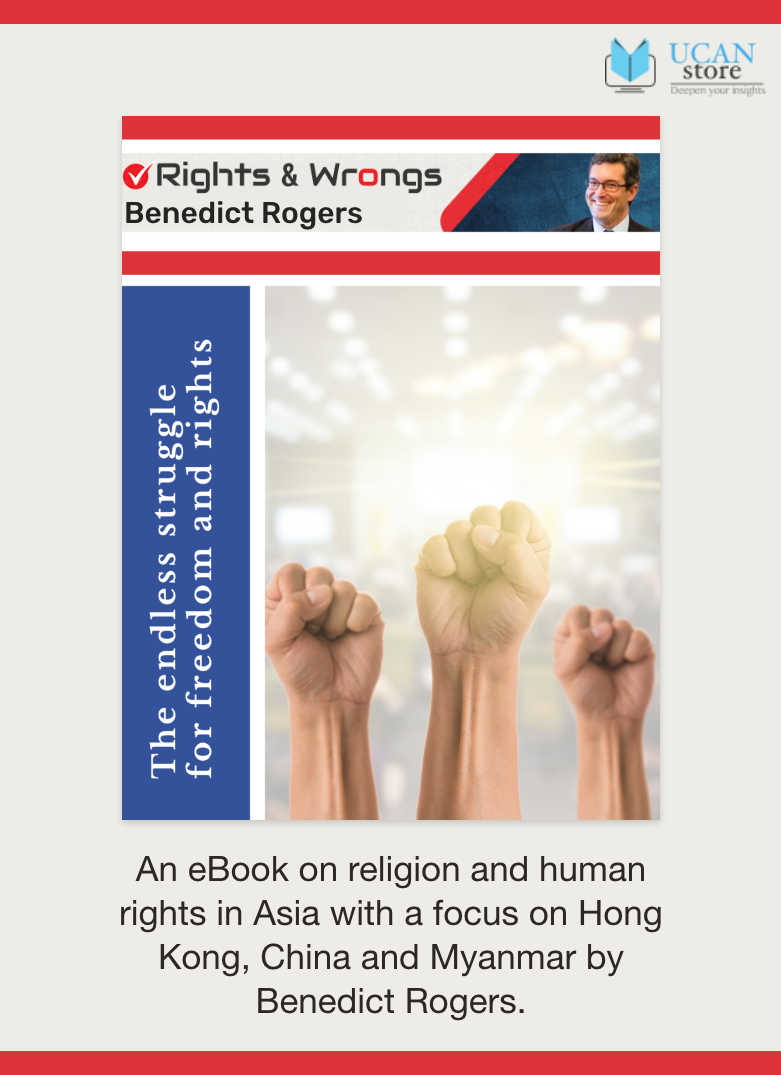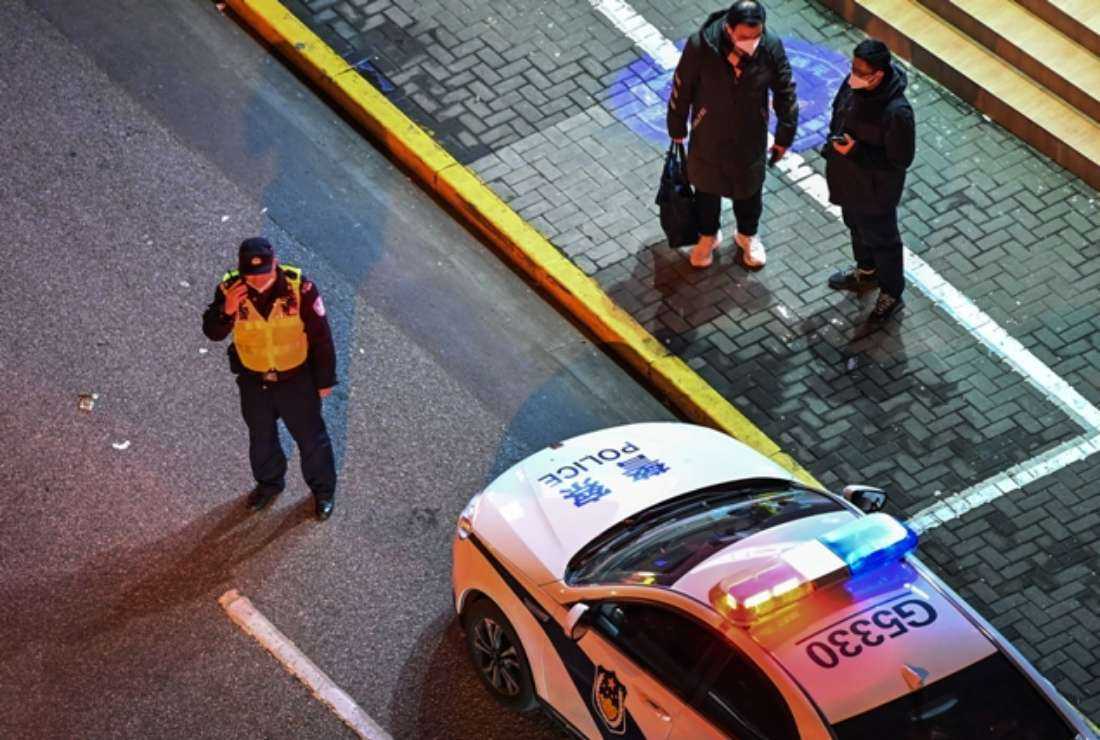
Dissatisfied with an increasingly closed and autocratic regime they yearn for the freedom to determine their destiny

A Chinese policeman stands outside a residential compound under lockdown in the Jing'an district of Shanghai on Dec. 2. (Photo: AFP)
Protests as seen in the last days of November have not taken place in China for many years. In many major cities, including Beijing, Shanghai, Urumqi, Zhengzhou, Guangzhou, Wuhan, Nanjing, and Xi’an ... numerous people have taken to the streets to protest anti-Covid measures.
Local protests, unknown to most, caused by institutional harassment and corruption, happen frequently in China. However, it is something quite rare that protests in different cities have the same goal: and it is the first time since Xi Jinping took office in 2012.
It is also remarkable that the protests started in Urumqi, the capital of Xinjiang, the province with an Islamic majority where the Uighur population is subject to a very strong oppressive policy.
The protests in Urumqi started after a fire killed 10 people confined in a high-rise apartment building. Lockdown measures contributed to the tragedy as firefighters could not enter the building quickly and residents could not exit.
Protests are a sign of dissatisfaction but not of political change. It must be acknowledged, the regime suppresses them effectively.
On Nov. 30, authorities vowed to resolutely put an end to new protests, accusing ‘hostile forces’ of upsetting the social order. According to reports, police visited some of those who participated in the recent protests or posted videos and images on social media. Of course, it is difficult to know how participants were identified or how many were contacted by the police.
"If in the last few days there are some partial relaxations, many restrictions remain in place"
However, there are signs of a moderate shift toward gradual reopening.
On Nov. 29, officials said that China would respond to urgent concerns raised by the population and that anti-Covid rules would be implemented more flexibly, adjusting according to each region's conditions.
On Nov. 30, party authorities expressed the intention of findings ways “to resolve conflicts and disputes in a timely manner, helping to resolve people's practical difficulties.”
Country pandemic control has entered a “new stage and mission.”
In major metropolises, including Beijing, Shanghai, Shenzhen, Wuhan, and Chengdu, negative Covid tests are not required on public transport and at public venues. In some cases, residents who tested positive, if need be, can quarantine at home instead of at specially created centers.
In any case, if in the last few days there are some partial relaxations, many restrictions remain in place, and in various areas, new lockdowns and travel restrictions are implemented.
The anti-Covid measures are vexatious and force people into harsh lockdowns. A few positive cases are enough to halt the social and economic life of millions of people. The zero-Covid policy has proved an unbearable madness and resulted in November’s protests.
Watching soccer World Cup matches, peoples realize that out there life has resumed and people exist without masks. In China (and partly in Hong Kong as well), on the other hand, people are still subject to restrictions, quarantines and lockdowns, and cannot go around without wearing a mask.
It is like people are living in a perpetual 2020: a bad dream that seems obsessively, repeating itself, like in the movie Groundhog Day, where the protagonist played by Bill Murray continues reliving the same day.
A nightmare that has a very high price: the mental health of fragile people; the cancellation of the social life of young people; the economic recession.
"Xi, an attentive observer of the collapse of the Soviet Union, leaves nothing to chance"
Xi, Beijing’s strong man, is willing to pay any price, or rather to make the people pay for it. ‘The heroic battle against Covid must be won.’ Yet, people, especially young people, are de-motivated and feel deprived of their future. The years of happy growth are in the past.
According to CNN, young protesters directed their anger at Xi's authoritarian policies as well, to the point that, in Shanghai, some defiantly called for Xi to step down.
Some observers might have thought of the Tiananmen demonstrations of 33 years ago. Then, young people demanded freedom and democracy after the death of the reformist leader Hu Yaobang.
On Nov. 30, Jiang Zemin, the leader who after Tiananmen opened up to collective management of power, died. He might not be as popular as Hu Yaobang, yet his death is minimized for fear of fueling reasons for protests.
Xi, an attentive observer of the collapse of the Soviet Union, leaves nothing to chance. He is a man alone in command, emerging stronger than ever from the Oct. 20 Communist Party Congress. He even ordered the humiliating ousting of the elderly Hu Jintao in front of the cameras. And, in front of the camera, he presented himself, with the six Politburo men chosen for their loyalty to him, all dressed in military uniform, as if they were at war.
The regime mesmerizes the discontent by way of nationalist rhetoric, suggesting that the world is plotting against China, and Covid was an episode of it. After the suppression of Hong Kong's democratic hopes, the reunification of Taiwan fits into the nationalist narrative of an increasingly closed and autocratic regime. The people, on the other hand, the great Chinese people, do deserve something else. Freedom above all; and the right to determine its own destiny.
*The views expressed in this article are those of the author and do not necessarily reflect the official editorial position of UCA News.
Help us keep UCA News independent
The Church in Asia needs objective and independent journalism to speak the truth about the Church and the state.
With a network of professionally qualified journalists and editors across Asia, UCA News is just about meeting that need. But professionalism does not come cheap. We depend on you, our readers, to help maintain our independence and seek that truth.
A small donation of US$2 a month would make a big difference in our quest to achieve our goal.

Share your comments